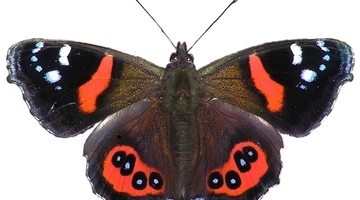

Be part of a worldwide movement and use Global Earth Challenge to submit or classify photos to help our planet’s environment and human health. Global Earth Challenge is a citizen science campaign ...
READ MORE

iNaturalist logs hundreds of thousands of photos of flora, fauna and fungi. There are even sound recordings too. Each is described and geo located. iNaturalist is used by citizens and scientists ...
READ MORE

This project involves the pesky Pieris rapae (better known as the white butterfly or white cabbage butterfly), which is very common in Aotearoa New Zealand. It is believed to have originated in ...
READ MORE

Adventure is engaging in an unusual or daring experience. Discovery is the act of finding or learning something for the first time. Adventure and discovery are both pretty exciting prospects – so ...
READ MORE

Names are important. They identify who we are and where we come from. But sometimes, names don’t tell the whole story. For example, the Oxford Dictionary defines ‘moth’ as an insect with two ...
READ MORE

Moths are members of the order Lepidoptera, but these mostly nocturnal creatures are often in the shadow of the brighter, day-flying butterflies. New Zealand has fewer than 20 butterfly species ...
READ MORE

In this activity, students set up and walk a transect to observe and record butterfly sightings. They act as citizen scientists to monitor changes in the local environment. Modify this activity ...
READ MORE

In this activity, students place small stickers (tags) onto caught or newly emerged monarch butterflies and release them into the environment. The tag number, information about the butterfly and ...
READ MORE

Pollinators are insects that visit flowers to drink nectar or feed on pollen. During this process, they get covered in pollen grains and then transport the pollen from one plant to another ...
READ MORE

The New Zealand Curriculum has a strong focus on ensuring that all students have the skills and knowledge to participate in public debates and decision-making processes as critical, active ...
READ MORE

In this online PD session recorded on 30 July 2015, primary school teacher Angela Schipper describes how she used the Butterflies resources from the Science Learning Hub in the classroom. In ...
READ MORE

In this recorded professional learning session, Greta Dromgool and Ben Moorhouse from the Department of Conservation unpack conservation education and: introduce some exciting DOC resources aimed ...
READ MORE
Weno Iti, Apanui Skipper and Andrew Swales talk about research they undertook for the toolkit. They describe their collaboration with iwi and their learning from them that resulted in an ...
READ MORE

Andrew Swales, Apanui Skipper and Weno Iti discuss their roles in the development of the toolkit. Andrew led the development while Apanui provided the Māori component – helping to identify the ...
READ MORE
Ka kōrero a Maia rāua ko Tūmai, nō Te Kura Kaupapa Māori o Ōtepoti mō te take i pai ai kā pepe tuna ki a rāua. English translation Maia and Tūmai from Te Kura Kaupapa Māori o Ōtepoti tell us why ...
READ MORE

Exploring moths as ecological indicators of health and connectedness in our natural world. Select here for further information, transcript and copyright.
READ MORE

Most of New Zealand's butterflies belong to the Nymphalidae and Lycaenidae families. Use the Slideshow menu for further options, including view full screen, and go here for the download option.
READ MORE

Learn how farms can keep waterways healthy for those downstream and for our precious native freshwater fish, all while benefiting farm health and the farming operation’s bottom line.
READ MORE